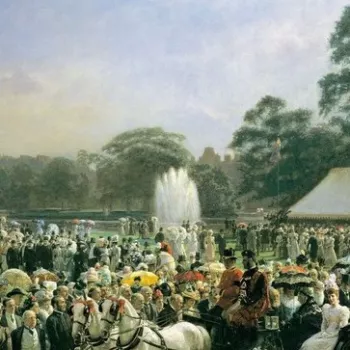Replica of the Warwick Vase signed & dated 1830
Bronze, granite | 159.0 x 253.0 x 185.0 cm (whole object) | RCIN 71434
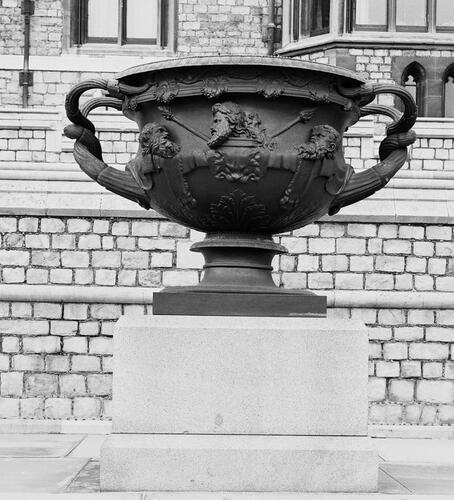
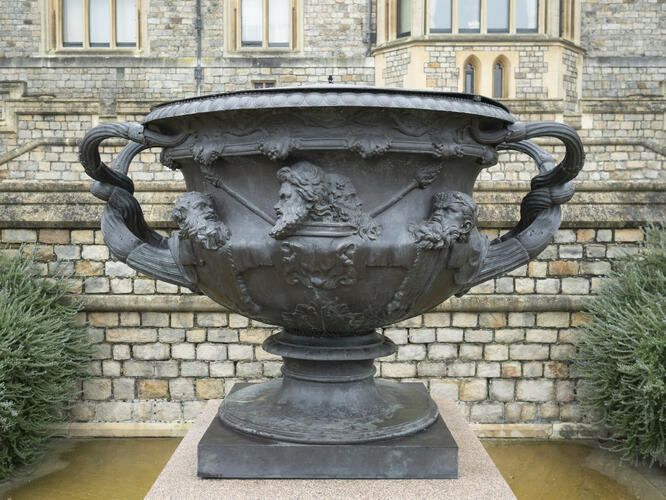
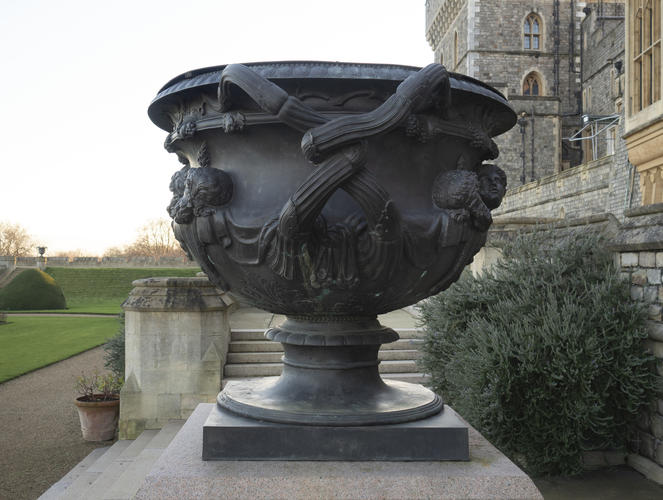
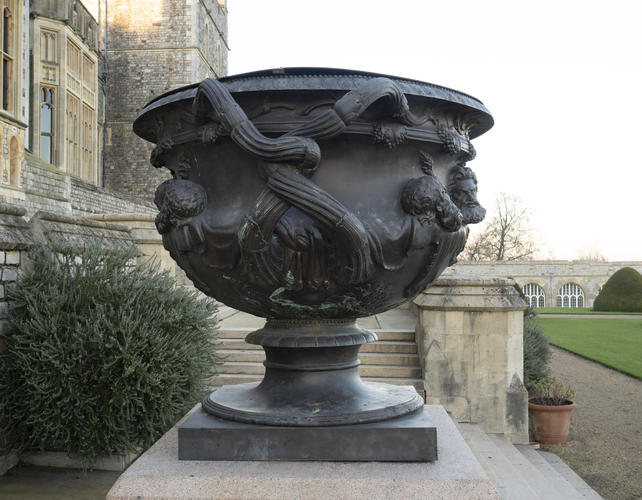
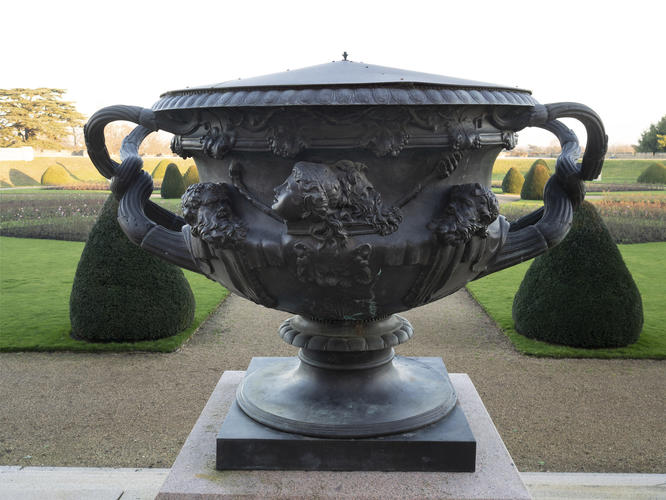
-
A bronze replica of the Warwick Vase, handles intertwined, fluted and leaf capped. The body with vine leaves and berries, scrolls and female and male heads in high relief. The base and top rim beaded and with tongue border. On rectangular speckled granite base with chamfered corners and moulded base.
The Warwick Vase takes it name after the 2nd Earl of Warwick who acquired it as an ancient relic from his uncle, Sir William Hamilton in around 1775. The vase was not original but a recreation that incorporated fragments from the late Hellenistic period, discovered in 1770 in the Villa Adriana (Emperor Hadrian’s Villa) in Tivoli, during excavations organised by the Scottish painter Gavin Hamilton. The discovered fragments were added to a recreated marble model which, it has been suggested, was the work of the architect Giovanni Battista Piranesi or the sculptor Bartolomeo Cavaceppi.
In 1813 the Earl of Warwick agreed to allow the London silversmiths Messrs Rundell, Bridge & Rundell to make a replica of the Warwick Vase in silver, but the project failed due to its size, difficulty and potential high cost. A few years later, the wax model and casts were used to produce a replica in bronze instead, which was cast by the founder Charles Crozatier in France. Commissioned by Messrs Rundell, Bridge & Rundell, Crozatier made two bronze replicas of the vase, one of which is this one in the Royal Collection.
The Warwick Vase became a source inspiration for designs during the neo-classical revival of the late 18th and early 19th centuries. In the Royal Collection there are several reproductions in silver and silver-gilt, most noticeable the reductions in silver and silver-gilt by the silversmith Paul Storr, acquired by George IV, who was very fond of this piece.
The vase has fluted and intertwined handles and the body is decorated with vine leaves and berries, scrolls, and female and male masks in high relief. The base and top rim are beaded and with tongue border. The vase stands on a rectangular speckled granite base with chamfered corners and moulded base.Provenance
Purchased by George IV from Messrs Rundell, Bridge & Rundell c.1822 at a cost of £1470 (Royal Archives, Georgian Papers 22907). The vase also appeared in a list of work in hand at Rundell, Bridge & Rundell with an estimate of £1500 (Royal Archives, Georgian Papers 26251).
-
Creator(s)
(founder (metals))(retailer)Acquirer(s)
-
Medium and techniques
Bronze, granite
Measurements
159.0 x 253.0 x 185.0 cm (whole object)
Category
Object type(s)
Place of Production
Paris [Île-de-France]




